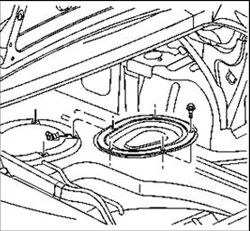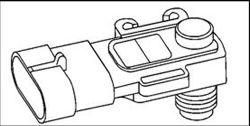p0453 evaporative emission control system pressure sensor high input
Chevy s-10 Bazer. I have a code P0453 evap high pressure. Vehcicle very difficult to start after sitting for several hours. Will start again if sitting for a short time. Has a new fuel pump, regulator and fuel filter. How do I correct this code? Will this correct the problem starting?
Evaporative Emissions Control System Pressure Sensor High Input
The EVAP (Evaporative Emissions) System allows fuel tank vapors to be purged into the engine and burnt rather than expelled into the atmosphere as harmful emissions. The EVAP system contains a pressure sensor to check the integrity of the system. Periodically, the EVAP system performs a pressure test to check that there are no leaks in the system. It uses this sensor, also known as a fuel tank pressure (FTP) sensor to check for leaks. Basically P0453 means the PCM (Powertrain Control Module) noticed the EVAP Pressure sensor or FTP is indicating a higher than normal pressure (above 4.5 Volts) in the EVAP system. NOTE: On some vehicles the FTP is a part of the fuel pump assembly in the tank.
It is very possible that this is causing hard starts. This code is set when fuel tank pressure (vacuum) becomes too high.Possible causes:
- faulty fuel tank pressure sensor
- VCM(vehicle control module) is faulty
- short to voltage in wiring from VCM to fuel tank pressure sensor
- open in wiring from VCM to fuel tank pressure sensor
Most of the time it is a faulty fuel tank pressure sensor, however i always recommend having the proper diagnostic troubleshooting done so that you are not replacing a good part needlessly.
Below is the diagnostic procedure for troubleshooting this problem(diagnostic scanner with evap capability and live data capability, digital voltmeter are required)
Using an scan tool access FTP sensor value with Key on Engine off (KOEO). Normal value is usually somewhere near 2.5 Volts at atmospheric pressure (may fluctuate some due to altitude). It shouldn't ever be above 4.5 Volts.
1) If it is close to 2.7V with the gas cap off, the problem is likely intermittent. Using a Digital Volt Ohm Meter, measure the voltage on the signal wire while trying to induce the problem by wiggle testing all the wiring at the FTP sensor. If the voltage fluctuates when wiggle testing, check for connector problems; i.e. water in the connector, broken or chafed wiring.
2) If the value shown on the scan tool is above 4.5V, unplug the sensor (if possible) and check for voltage again. If the high voltage is still present when unplugged, inspect wiring harness for a short to voltage on the signal wire. If the high voltage disappears when unplugging the sensor, check for a good ground to the sensor and proper reference voltage. If you have a good ground and 5 Volts reference voltage, replace the FTP sensor since it's likely shorted out.
Read more at: http://www.obd-codes.com/p0453
Copyright OBD-Codes.com

The fuel tank pressure sensor is located on top of the fuel tank:
- Remove the rear compartment trim panel.
- Remove the fuel sender access panel bolts.
- Remove the fuel sender access panel.
- Disconnect the fuel tank pressure sensor electrical connector.
- Remove the fuel tank pressure sensor.
 Removing access panel for fuel tank pressure sensor
Removing access panel for fuel tank pressure sensor  Identifying Fuel Tank Pressure Sensor
Identifying Fuel Tank Pressure Sensor
To install:
- Install the fuel tank pressure sensor.
- Connect the fuel tank pressure sensor electrical connector.
- Install the fuel sender access panel.
- Install the fuel sender access panel bolts. Tighten the fuel sender access panel bolts to 2 Nm (18 inch lbs.).
- Install the rear compartment trim panel
This will help.
Thanks.
No comments:
Post a Comment